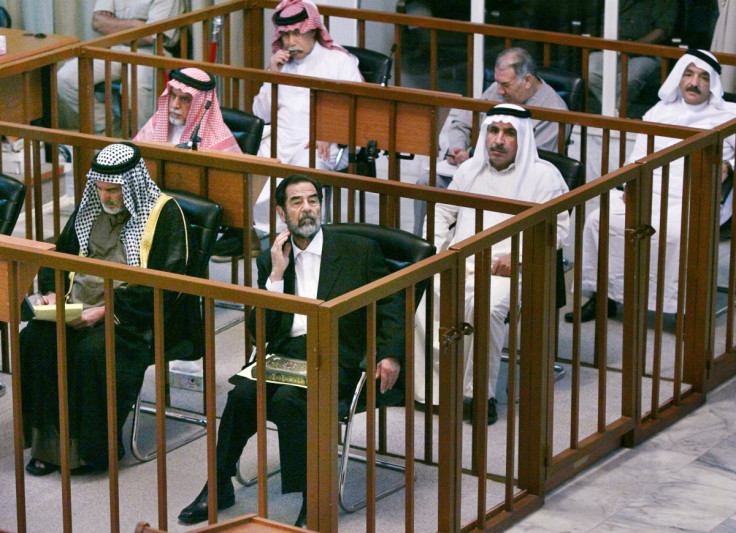'Every Victim Of Saddam Hussein Was Waiting For This Moment'

Saddam Hussein's trial in 2005, two years after he was ousted by a U.S.-led invasion, was a chance for Ali Hassan al-Haidari to avenge the execution of his brothers and others from his village who were killed by the Iraqi dictator's security forces.
"Every victim of Saddam Hussein was waiting for this moment," said Haidari, one of the few people who was ready to show his face when giving testimony to the court that sent the former Iraqi strongman to the gallows.
"The one oppressed during Saddam's time was now standing there and asking for the rights of the oppressed," said Haidari, who was detained and tortured for four years when security forces rounded up people from his village of Dujail following a failed assassination bid in 1982 on the Iraqi autocrat.
Seven of his brothers were among those killed in the security sweep after the attempt on Saddam's life as his convoy passed by. Haidari was 14 when he was detained.
Prosecutors said more than 140 people from the Shi'ite Muslim farming village that lies about 60 km (35 miles) north of Baghdad, were hunted down, tortured and killed. They said women and children were sent to a desert internment camp. Many disappeared.
A video from the trial showed Haidari standing with Saddam behind him and telling the judges: "He is responsible for my detention, for losing my future, for executing my brothers".
Allowing his face to be broadcast on television carried risks. "I was under special security measures when going out and my movements were limited," he said.
When he was sentenced, Saddam shouted: "Long live the people. Long live the nation. Down with the agents."
Iraq was plunged into turmoil after Saddam, a Sunni Muslim, was toppled. Al Qaeda waged an insurgency, often targeting members of Haidari's Shi'ite faith. Civil war flared from 2006 to 2008, and in 2014 Islamic State captured a third of Iraq.
Grand Ayatollah Ali al-Sistani, Iraq's most influential Shi'tie cleric, issued a religious decree calling on Iraqis to fight against Islamic State. Haidari signed up for a fight that eventually saw the militant group and its caliphate collapse.
(Editing by Michael Georgy and Edmund Blair)

© Copyright Thomson Reuters 2025. All rights reserved.





















